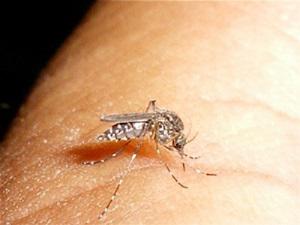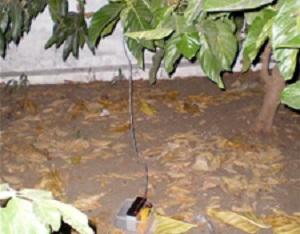Varsovia Cevallos
The objective of the study is to make an updated inventory and distribution of mosquito species, and assess the dynamics of selected species in the Guayas province, which could be a prime danger zone for introduction of insect-borne disease to the Galapagos Islands.

Female adult of Aedes sp.
Preventing diseases for entering and spreading in wild animal populations is the most efficient and cost effective way of managing diseases. This study intends to monitor insect disease vectors in critical areas of the Ecuadorian continental coast, which may have impact on conservation of Galapagos wildlife. It is known that vector mosquitoes transported on airplanes, carrying tourists, represent the highest risk of diseases reaching Galapagos by a vector pathway. All the commercial flies carrying tourists and most of the cargo ships to Galapagos leave from Guayaquil, Ecuador. Consequently, it is essential to identify the potential mosquito vectors populations of main diseases, which may use planes and ships to be introduced to Galapagos and thread its biodiversity. The study plans:

CDC trap during collection at J.J. Olmedo international Airport in Guayaquil.
(1) to make an updated inventory of mosquito species (Culicidae) in Guayas province, which maintains an active exchange of passengers and cargo with the islands;
(2) to establish the geographic distribution of mosquito species;
(3) to assess the population dynamics of selected mosquito species and their ecological characteristic relationships;
(4) to disseminate project outputs.
Cross-sectional field surveys will be conducted in Guayas province to make an updated inventory of mosquito species (Culicidae). CO2-baited traps will be used throughout the surrounding areas of the airport and seaport. Additionally, immature stages of mosquito will be collected and reared in the lab. The eco-climatic factors will be registered. A spatial database for Guayas will be constructed from obtained records, literature and scattered reports.
Longitudinal population dynamic studies of endemic and invasive vector species will be conducted in selected field sites based on the results from the cross-sectional surveys. The field survey for adults and immature stages will be carried out every two months for one year to determine the density fluctuation on dry and wet season. The outcomes of the longitudinal field studies will be used to assess whether the mosquito species are timely records or well-established populations. Based on the results of the field surveys, distribution models, predicting the probability of presence of Culicidae species at a 1km resolution, will be developed. The models will be based on multivariate analysis techniques and eco-climatic data as predictor variables.
The model outputs will enable to understand the factors determining the observed distribution patterns. They will also enable to highlight Culicidae biodiversity hotspots in Guayas, which are of prime importance when addressing the issue of emergence of diseases.